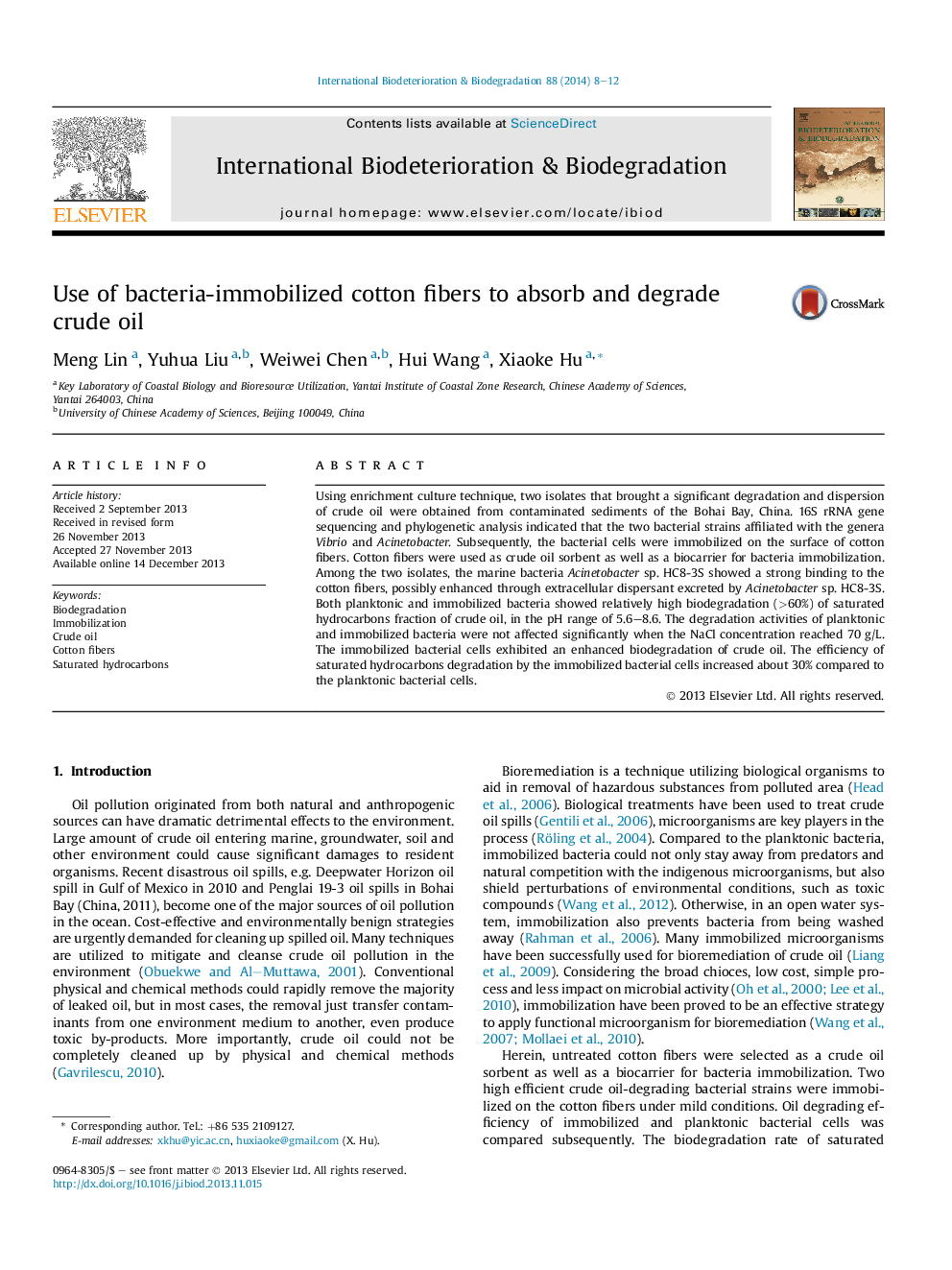| کد مقاله | کد نشریه | سال انتشار | مقاله انگلیسی | نسخه تمام متن |
|---|---|---|---|---|
| 4364906 | 1616328 | 2014 | 5 صفحه PDF | دانلود رایگان |
• Cotton fibers were used as crude oil sorbent as well as a biocarrier for bacteria immobilization.
• The immobilized bacterial cells exhibited an enhanced biodegradation of crude oil.
• The degradation activity was not affected when the NaCl concentration reached 70 g/L.
Using enrichment culture technique, two isolates that brought a significant degradation and dispersion of crude oil were obtained from contaminated sediments of the Bohai Bay, China. 16S rRNA gene sequencing and phylogenetic analysis indicated that the two bacterial strains affiliated with the genera Vibrio and Acinetobacter. Subsequently, the bacterial cells were immobilized on the surface of cotton fibers. Cotton fibers were used as crude oil sorbent as well as a biocarrier for bacteria immobilization. Among the two isolates, the marine bacteria Acinetobacter sp. HC8-3S showed a strong binding to the cotton fibers, possibly enhanced through extracellular dispersant excreted by Acinetobacter sp. HC8-3S. Both planktonic and immobilized bacteria showed relatively high biodegradation (>60%) of saturated hydrocarbons fraction of crude oil, in the pH range of 5.6–8.6. The degradation activities of planktonic and immobilized bacteria were not affected significantly when the NaCl concentration reached 70 g/L. The immobilized bacterial cells exhibited an enhanced biodegradation of crude oil. The efficiency of saturated hydrocarbons degradation by the immobilized bacterial cells increased about 30% compared to the planktonic bacterial cells.
Journal: International Biodeterioration & Biodegradation - Volume 88, March 2014, Pages 8–12
